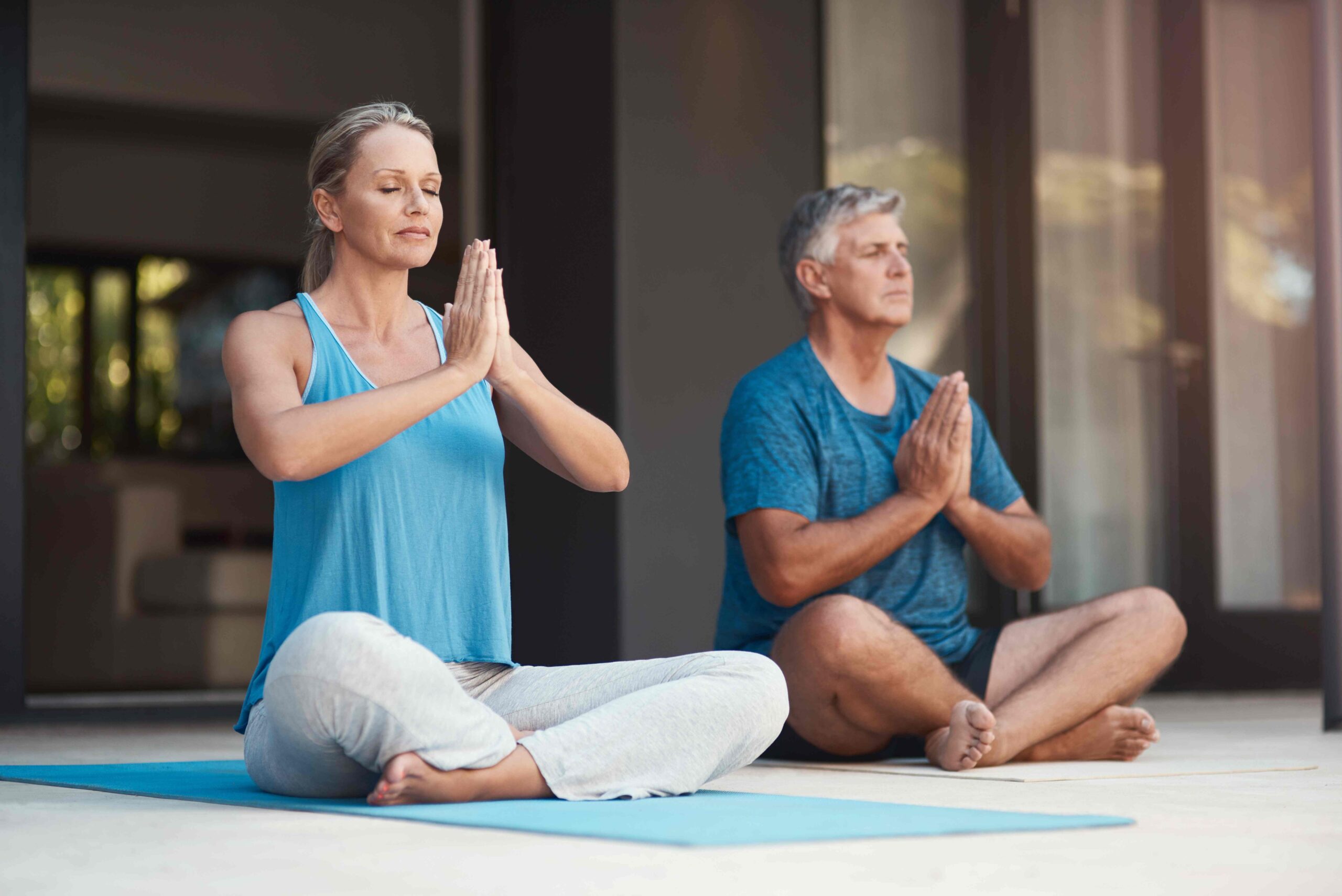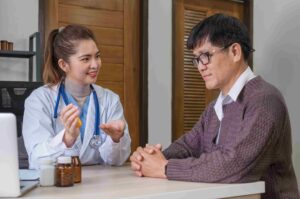Why Choose Life Line Services
At Life Line Services, we get it—addiction is a tough nut to crack. It needs a personal touch and a full-on approach. Our services are all about giving you the best shot at recovery, mixing the old-school with the new to tackle opioid addiction head-on.
All-Inclusive Wellness Services
We’ve got a buffet of wellness services to cover every angle of addiction recovery. Our top-notch outpatient program blends the classics like one-on-one, group, and family therapy with some cool extras like dance therapy, Tai Chi, art therapy, and even spiritual growth. We also throw in cultural awareness, job services, psychiatric care, and physical health.
Here’s a taste of what we offer: Acute Care, Individual Counseling, Ketamine Assisted Treatment, Medication Assisted Treatment, Suboxone Treatment, and Weight Loss Solutions. Each service is crafted to give you a full-circle approach to opioid addiction treatment.
Personalized Treatment Plans
No two people are the same, and neither are their paths to recovery. That’s why we whip up personalized treatment plans just for you. We look at how deep the addiction runs, what you need to recover, your budget, schedule, and where you live.
Our Intensive Outpatient Programs are just as good as staying in a treatment center. Studies show that 50-70% of folks in outpatient programs stay clean, just like those in inpatient programs.
Our Medication Assisted Treatment includes options like methadone, buprenorphine, slow-release oral morphine (SROM), and levomethadone. If those don’t cut it, we’ve got heroin-assisted treatment using diamorphine, which is a cost-effective way to keep you on track and cut down on illegal opioid use.
At Life Line Services, we’re all about harm reduction. It’s a no-judgment approach that focuses on making life better for you and your community without forcing you to quit cold turkey (NCBI).
Choosing Life Line Services means picking a well-rounded, all-in approach to recovery. We’re here to give you a treatment plan that fits you like a glove, helping you hit your recovery goals and live your best life.
Holistic Approaches to Addiction
At Life Line Services, we get it—opioid addiction is a tough nut to crack. That’s why we’ve mixed in some holistic methods with our treatment plans for opioid addiction.
Mind-Body-Spirit Connection
We treat the whole person, not just the addiction. Your mind, body, and spirit are all part of the package. This idea comes from the American Holistic Health Association, which says you need to look at the big picture to really help someone recover (Sunrise House).
Our individual counseling services help you tackle the mental side of things. Meanwhile, our acute care services and medication-assisted treatment options handle the physical stuff. And let’s not forget spiritual counseling, which helps you find purpose and connection.
Integrating Alternative Therapies
We don’t just stick to the old-school methods. We mix in some alternative treatments to boost your overall wellness and make our medication-assisted treatment for addiction even more effective.
One cool gadget we use is the passive jogging device. It’s a game-changer for managing opioid addiction and pain. It helps your body by increasing nitric oxide, reducing stress and inflammation, and slowing down the aging of your blood vessels (PubMed).
We also offer ketamine-assisted treatment for mental health issues and suboxone treatment for opioid addiction. Both are solid options in a well-rounded treatment plan.
By blending these holistic approaches with our traditional methods, we aim to give you a complete, personalized treatment that tackles the root of the problem, not just the symptoms. Check out our comprehensive approach to opioid addiction to see how we can help you or someone you care about.
Traditional vs. Holistic Treatment
When tackling opioid addiction, you’ve got two main roads: traditional and holistic treatment. Each has its own flavor and can work wonders depending on what you need.
Effectiveness and Challenges
Traditional addiction treatment usually kicks off with a medical detox, followed by a treatment plan that fits like a glove. This plan considers how deep the addiction runs, what you need to recover, your budget, schedule, and where you live (Sunrise House). These programs have a good track record, with studies showing that 50-70% of folks in outpatient programs stay clean, similar to those in inpatient programs (Sunrise House).
Holistic addiction treatment, on the other hand, casts a wider net. It mixes traditional methods like individual, group, and family therapy with holistic ones like dance/movement therapy, Tai Chi, art therapy, and more (PubMed). The aim? To help you build a stronger sense of self, boost your self-esteem, and grow your confidence.
But measuring the success of holistic treatment can be tricky. For example, the jury’s still out on whether acupuncture really helps with opiate addiction, according to a review in Evidence-Based Complementary and Alternative Medicine.
Tailored Treatment Plans
At Life Line Services, we’re all about giving you a treatment plan that’s as unique as you are. We know that everyone’s battle with addiction is different, so your treatment should be too. Our plans blend both traditional and holistic methods to give you a well-rounded approach to beating opioid addiction.
Take traditional medication-assisted treatment options like Suboxone, for example. It can help manage withdrawal symptoms and cravings. On the holistic side, we offer spiritual counseling to support your mental and emotional health.
We also bring in some cool new tech, like the passive jogging device, which offers a holistic and budget-friendly way to tackle opioid addiction and pain.
By mixing traditional and holistic treatments, we aim to cover all bases, addressing not just the addiction but also what’s driving it. We believe this whole-person approach — body, mind, and spirit — can lead to a more lasting recovery.
Want to know more about what we offer? Check out our site for articles on acute care services, ketamine-assisted treatment, and our personalized weight loss programs.
Fresh Ways to Fight Opioid Addiction
At Life Line Services, we get it—beating opioid addiction is tough. That’s why we mix old-school methods with new tech to give you the best shot at recovery. Our approach is all about treating the whole person, not just the addiction.
The Magic of the Gentle Jogger
Meet our secret weapon: the Gentle Jogger (JD). This nifty gadget mimics jogging while you’re just chilling on the couch or lying down. It uses motorized foot pedals to get your blood pumping, hitting a bumper 175-190 times a minute. This action boosts nitric oxide (NO) in your body, which helps with pain and addiction. Plus, it fights off the nasty side effects of opioids like high blood pressure and inflammation (PubMed).
Why does this matter? Well, high blood pressure and lack of exercise can make opioid addiction worse. By adding the Gentle Jogger to our treatment plans, we offer a cost-effective way to tackle both addiction and pain. Want to know more about our holistic approach? Check out our comprehensive opioid addiction treatment section.
Boosting Nitric Oxide: The Unsung Hero
Nitric oxide isn’t just a fancy term; it’s a game-changer in addiction treatment. Using the JD or combining it with opioid agonists can help during the rough stages of addiction—whether you’re stabilizing, tapering off, or trying to avoid a relapse. Nitric oxide has shown to ease pain in conditions like fibromyalgia, osteoarthritis, and even sickle cell disease.
By upping your nitric oxide levels, we aim to lessen the bad stuff opioids do to your body and make your recovery smoother. This tech is part of our promise to give you the best medication-assisted treatment options.
Why We Love New Tech
Using cool gadgets like the Gentle Jogger helps us offer a well-rounded approach to beating opioid addiction. We believe that mixing tech with traditional methods makes our treatment plans more effective. Want to see how we tailor these plans just for you? Head over to our individualized treatment plans.
So, if you’re ready to kick opioids to the curb, we’re here to help—with a little help from some cutting-edge tech.
Pharmacotherapy for Addiction
At Life Line Services, we get it—everyone’s path to recovery is different. That’s why we offer a mix of treatments, including meds, to tackle opioid addiction from all angles. Here’s a peek at some of the meds we use in our comprehensive opioid addiction treatment.
Clonidine, Lofexidine, Dexmedetomidine
Clonidine, lofexidine, and dexmedetomidine have been around since the ’70s, helping folks manage those nasty opioid withdrawal symptoms. These symptoms pop up because of too much norepinephrine. When we pair these meds with ways to boost nitric oxide, they can help keep things steady, ease off opioid doses, manage withdrawal, and cut down on relapses (PubMed).
These meds work by messing with eNOS (endothelial Nitric Oxide Synthase) to block norepinephrine, the stuff that makes withdrawal feel like a nightmare. By doing this, they make the whole process a bit more bearable for those kicking opioids.
Opioid Substitution Treatments
Opioid Substitution Treatments (OST) are a big part of our medication-assisted treatment game plan. These include methadone, buprenorphine, slow-release oral morphine (SROM), and levomethadone. They’re a lifeline for folks battling opioid addiction, helping to cut down on illegal opioid use and keeping people in treatment programs (NCBI).
Take methadone, for example. It’s been proven to slash death rates among opioid users and helps curb the spread of diseases.
Buprenorphine is another winner. It’s a partial opioid receptor agonist, meaning it causes milder withdrawal symptoms, has a lower overdose risk, and lasts longer, so you don’t need it every day (NCBI).
Injectable hydromorphone hydrochloride is also a solid option, especially for hardcore intravenous heroin users. It’s been shown to cut down on illegal heroin use.
By mixing these meds into our medication-assisted treatment options, we give our patients the tools they need to beat addiction. At Life Line Services, your health and well-being are always our top priority.
CAM Therapies for Pain Management
At Life Line Services, we believe in the power of holistic approaches to opioid addiction treatment. One big part of our strategy involves Complementary and Alternative Medicine (CAM) therapies for pain management. These therapies, which include massage therapy, chiropractic care, acupuncture, and yoga, offer a drug-free way to manage pain, cut down on opioid use, and boost overall wellness.
Massage Therapy and Chiropractic Care
According to a study published in NCBI, 27.3% of patients on opioids for chronic pain used massage therapy, while 17.8% went for chiropractic treatment. These therapies were rated as super helpful, with 90% of patients finding value in massage therapy, and 80.9% reporting benefits from chiropractic treatment.
Massage therapy, known for its stress-relieving and pain management perks, involves working on muscles and other soft tissues to ease tension and reduce pain. It’s especially good for folks dealing with chronic pain.
Chiropractic care, on the other hand, focuses on the spine and its impact on the nervous system. Chiropractic adjustments can help ease pain, improve body function, and boost the body’s natural healing abilities.
Both these therapies offer natural ways to manage pain, potentially cutting down the need for opioids. For more info about our unique approach to pain management, check out our articles on comprehensive opioid addiction treatment and benefits of medication-assisted treatment for addiction recovery.
Acupuncture and Yoga Benefits
Acupuncture and yoga are two other CAM therapies we use in our holistic approach to pain management. According to the same NCBI study, 7.6% of patients used acupuncture and 6.1% practiced yoga to manage their chronic pain. Impressively, 81.3% of the patients found yoga to be beneficial.
Acupuncture, an ancient Chinese practice, involves inserting thin needles into specific points on the body. This can help balance the body’s energy, ease pain, and promote healing.
Yoga, on the other hand, combines physical postures, breathing exercises, and meditation to improve mental and physical health. Regular yoga practice can help reduce stress, promote relaxation, and ease chronic pain.
These therapies offer a holistic way to manage pain and contribute to overall wellness. They can be particularly beneficial as part of a comprehensive treatment plan for opioid addiction. For more insights into how we incorporate these therapies into our treatment programs, please see our articles on comprehensive approach to opioid addiction and long-term benefits of medication-assisted treatment.
At Life Line Services, we are committed to providing holistic, patient-centered care. We believe that integrating CAM therapies into our treatment plans can significantly improve outcomes for patients dealing with opioid addiction. We invite you to explore our services and learn more about our innovative approach to addiction treatment.
Global Focus on CAM for SUDs
As the world wrestles with the challenges of Substance Use Disorders (SUDs), there’s a growing buzz around alternative treatments. Complementary and Alternative Medicine (CAM) therapies are getting some serious attention as potential game-changers in the fight against SUDs.
Research Trends and Findings
According to NCBI, between 2001 and 2020, a whopping 3,807 publications were pulled from the Web of Science Core Collection on using CAM for treating SUDs. There’s been a noticeable spike in publications since 2015, showing a shift towards holistic approaches to opioid addiction treatment.
The most popular CAM therapies for treating SUDs were acupuncture and CAM psychotherapies, like mindfulness meditation. This focus highlights the evolving understanding of addiction as a condition that messes with both the body and mind.
Leading Institutions and Authors
Top research centers in this field are mainly in the USA, China, and England. Countries like India and Pakistan are also jumping on the CAM bandwagon for SUDs. The top 15 institutions diving deep into CAM for SUDs are mostly in the USA, with big names like Yale University, Harvard University, and the University of Washington leading the charge. The University of Pennsylvania stands out with the highest strength and a strong citation burst in this field.
When it comes to individual contributions, Frederick L. Altice takes the crown as the most productive author in CAM for SUDs, followed by folks like Evan Wood and Sudie E. Back. Authors like Kathleen M. Carroll and Bong Hyo Lee have the longest half-life, meaning they’ve been active and influential in this field for a long time.
The most frequently cited journal in this field is Addiction, followed by Drug and Alcohol Dependence, JAMA Psychiatry, and American Journal of Psychiatry.
This global focus on CAM for SUDs underscores the value of a holistic approach in tackling SUDs. At Life Line Services, we’re all about staying ahead with evidence-based treatments, blending both traditional and alternative therapies to offer comprehensive opioid addiction treatment. Our mission is to ensure that everyone we serve gets the most effective, personalized treatment for their unique needs.
JD Technology for Addiction and Pain
At Life Line Services, we’re always on the lookout for new ways to tackle addiction. One of our latest tools is JD technology, a game-changer for those dealing with opioid addiction and chronic pain.
Easy and Affordable
JD technology, also known as the passive simulated jogging device (GENTLE JOGGER), is a simple and budget-friendly way to help manage opioid addiction and chronic pain (PubMed). It boosts physical activity, which is crucial for overall health but often gets ignored in traditional treatments. The best part? You can use it while doing other things, making it super easy to fit into your daily life.
You don’t need to be a multitasking pro to use this device. It’s flexible and can be self-administered, giving you a handy tool to manage your addiction and pain. As part of our comprehensive approach to opioid addiction, we love adding innovative tech like this to our treatment plans.
The Magic of Nitric Oxide
JD technology works by upping the levels of nitric oxide (NO) in your body. Nitric oxide is a big deal for your health, helping with everything from reducing pain to fighting inflammation.
Higher nitric oxide levels can cut down on oxidative stress and inflammation, and even slow down aging in your blood vessels—issues often tied to opioid use. This means JD technology not only helps with addiction but also tackles chronic pain conditions like fibromyalgia, osteoarthritis, and peripheral arterial disease.
Plus, when you combine higher nitric oxide levels with opioid agonists, it can help stabilize, taper off, and even prevent relapses. This fits perfectly with our goal of offering holistic approaches to opioid addiction treatment.
In short, adding JD technology to our treatment plans helps us provide top-notch, personalized care. We’re always looking for new ways to give our patients the best possible care.







